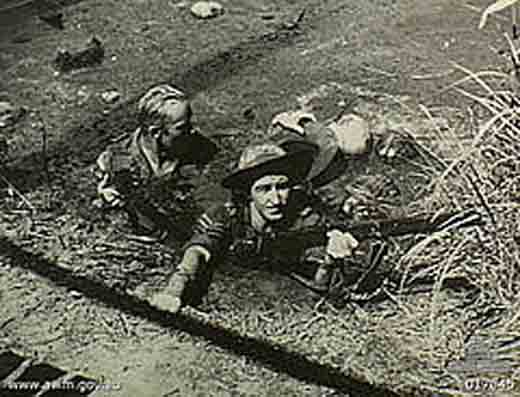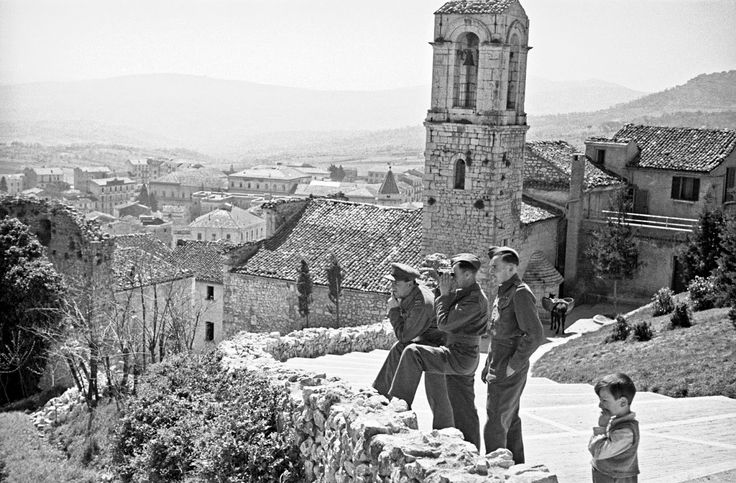Air Operations, CBI
BURMA- 12 10th Air Force B-25s and more than 30 A-31s attack Kalewa and Kohima (India).
- 18 A-31s attack Japanese Army positions near Buthidaung.
- 9 459th Fighter Squadron P-38s attack airfields in the Meiktila area.
- 7 P-40s support Allied ground forces near Lakatawng and attack the town area.
- 28 10th Air Force fighter-bombers attack ammunition and supply dumps at Mohnyin and near Nanyaseik.
- 459th Fighter Squadron P-38s down 3 Ki-43 'Oscar' fighters over the Kangaung airfield at Meiktila at 1455 hours.
- 7 B-25s of 1st CACW Medium Bomb Group attack the town area of Mihsien and Japanese Army ground troops in the Mihsien area.
- 10 CACW P-40s attack rail and highway bridges spanning the Yellow River near Chengshan.
- 4 341st Medium Bomb Group B-25s and 8 P-40s attack the airfield at Tangyang.
- 10 14th Air Force P-40s attack small craft at Cat Ba Island, rail yards at Na Cham, and bridges Bac Le and Kep.
Air Operations, Europe
RAF BOMBER COMMANDEvening Ops:
- 346 Lancasters and 14 Mosquitos of Nos. 1 and 5 Groups and 2 Pathfinder Mosquitos are sent to bomb a German military camp near the French village of Mailly, near Rheims.
- The control of this raid in the target area fails to operate according to plan. The initial low-level markers are accurate and are well backed up by Lancaster marker aircraft. The 'Marker Leader', Wing Commander Cheshire, orders the Main Force to come in and bomb but the 'Main Force Controller', Wing Commander L. C. Deane, can not transmit the order to do so to the waiting Lancasters because his VHF radio set is being drowned by an American forces broadcast and his wireless transmitter is wrongly tuned. German fighters arrive during the delay and bomber casualties are heavy. The main attack eventually starts when the Deputy Controller, Squadron Leader E. N. M. Sparks, takes over.
- About 1,500 tons of bombs are dropped with great accuracy. 114 barrack buildings, 47 transport sheds and some ammunition buildings in the camp are hit. 102 vehicles, including 37 tanks, are destroyed. The night-fighter attacks continue over the target and on the return route. Among the aircraft shot down is that of Squadron Leader Sparks, who had stayed over the target to the end. Sparks evades capture and soon returns to England. The squadrons of No. 1 Group, which make up the second wave of the attack, suffer the most casualties - 28 aircraft out of their 173 dispatched. No. 460 (Australian) Squadron, from Binbrook, loses 5 out of its 17 Lancasters on the raid.
- 42 Lancasters are lost.
- 84 Lancasters and 8 Mosquitos attack a Luftwaffe airfield at Montdidier and cause a lot of damage among buildings and installations on the northern part of the airfield.
- 4 Lancasters are lost.
- In other ops, 27 Mosquitos are sent to Ludwigshafen, 14 to an ammo dump at Châteaudun, 32 Halifaxes lay mines off the French coast and in the Frisians, 23 aircraft are involved in Resistance operations, and there are 7 Intruder and 6 Serrate patrols, 3 RCM and 34 OTU sorties.
- 1 RCM Halifax, 1 Serrate Mosquito, 1 Lysander on a Resistance op and 1 OTU Wellington are lost.
FRANCE:
- 47 2nd Bomb Division B-24s, escorted by 101 VIII Fighter Command fighters, attack V-weapons sites around Wizernes using GH blind-bombing equipment.
ITALY:
- 12th Air Force B-25s and B-26s attack a marshalling yard and several bridges and bridge approaches.
- XII TAC A-20s attack several ammo dumps.
- XII TAC fighter-bombers attack gun emplacements, bridges, rail lines, and buildings in the US 5th Army battle areas plus rail lines, road bridges, dumps, and port facilities at Civitavecchia and Montalto di Castro, Axis vessels at sea, and numerous other targets of opportunity throughout northern and central Italy.
Air Operations, New Guinea
- 72 V Bomber Command B-24s, B-25s, and A-20s attack the airfields at Boram and Wewak.
- B-25s attack airfields at Maffin Bay.
- 5th Air Force B-25s, A-20s, and fighter-bombers mount 120 sorties throughouth the day against the Hansa Bay and Wewak areas.
- During the night, several Japanese bombers mount an ineffective raid against ground targets in the Hollandia area.
CBI
BURMAIn the northern sector the Chinese 22nd Division advances along the Kamaing road toward Inkangahtawng. The 64th Regiment of the same division cuts the Kamaing road a short way from the Hwelon stream.
In the Arakan the 14th Army captures the heights above the Maungdaw-Buthidaung road.
[Eastern Front
SOUTHERN SECTORHeavy fighting continues at Targul-Frumos.
GERMAN COMMANDThe FHO Department (Foreign Armies East) issues a report on the deployment of Soviet forces facing the Ostheer. Gehlen, the head of FHO, believes the Red Army has been considerably reinforced over the last few weeks, despite carrying out major offensives in the Ukraine and Crimea. The next phase of the Soviet attack is expected in the Ukraine, pushing into the Balkans. To counter this perveived threat, Hitler deploys a sizeable portion of his armor in the south. In the eastern Hungary the recently formed 1st Hungarian Army is incorporated into Army Group North Ukraine in Galicia while in Rumania the 3rd and 4th Rumanian Armies are being reinforced adn re-formed.
[Japan, Command
Adm Soemu Toyoda is named Commander in Chief of the Japanese Combined Fleets. There has been a long delay, caused by disagreement in the inner cabinet and the Imperial General Staff, in choosing a successor to Adm Mineichi Koga who was killed in an air crash on March 31. The appointment is made public on May 5 and Adm Koga's death is announced at the same time. The loss of a man of such great prestige as Koga is another psychological blow for the entire Japanese armed forces following the death of the national hero, Yamamoto. Moreover Toyoda does not inspire confidence in the Japanese officers and he has had no experience of command at sea.
[Occupied France
100,000 Liters of acetone is burned by the Resistance in the Lambiotte plant in Prémery.
[Pacific
- The US submarine Flasher (SS-249) sinks the Japanese merchant cargo ship Teisen Maru (5050t) in the South China Sea about 300 miles east of Cape Varella, French Indochina.
- The US submarine Sand Lance (SS-381) sinks the Japanese transport Kenan Maru (3129t) about 15 miles northwest of Saipan.
- The US submarine Tautog (SS-199) sinks the Japanese army cargo ship Fushimi Maru (4835t) off the south coast of Uruppu Island, Kurils.
- The US submarine Tinosa (SS-283) sinks the Japanese merchant cargo ship Toyohi Maru (6436t) west of the Bashi Channel between Formosa and Luzon.
- The British submarine Tantalus sinks the Japanes army cargo ship Amagi Maru (3165t) 40 miles south of Port Blair in the Bay of Bengal.
United States, Home Front
The production of synthetic quinine (anti-malarial) by young Harvard scientists Robert Woodward and William Doering is announced at Cambridge, Mass.
[Images from May 3, 1944
|
|
Moving through Swamp Water |
 |

